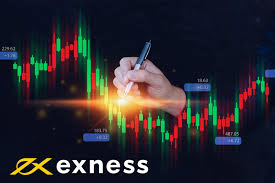Aucun produit dans le chariot.
LegalRoids
Understanding Margin Requirements Exness 3

Understanding Margin Requirements Exness
Margin requirements are a crucial aspect of trading that every investor should understand, particularly when trading with a broker like Exness. The margin represents the amount of money a trader must deposit to open and maintain a leveraged position. The relationship between margin and leverage is essential, as it can significantly impact the trader’s potential profits and losses. Dans cet article, we will delve into the intricacies of margin requirements at Exness, providing you with a comprehensive understanding of this vital aspect of trading. For more detailed information, you can visit margin requirements exness https://latam-webtrading.com/en/exness-uganda/.
What is Margin?
In trading, margin refers to the collateral needed to open a leveraged position. When you trade on margin, you borrow funds from your broker to take larger positions than you would otherwise be able to. This borrowing is based on a ratio known as leverage. Par exemple, with a leverage of 1:100, for every $1 of your funds, you can control $100 in the market.
Types of Margin Requirements
At Exness, there are primarily two types of margin requirements that traders need to be aware of:
- Initial Margin: This is the amount required to open a new position. It is calculated based on the size of the trade and the leverage applied.
- Maintenance Margin: This is the minimum amount of equity that must be maintained in your account to keep your position open. If your equity falls below this threshold, you may receive a margin call.
How Margin is Calculated

The margin requirement is calculated using a straightforward formula:
Margin Required = (Trade Size / Leverage)
Par exemple, if you wish to open a position worth $10,000 with a leverage of 1:100, the margin required would be:
Margin Required = $10,000 / 100 = $100Margin Levels and Margin Calls
Margin levels are a critical aspect of risk management in trading. A margin level represents the ratio of equity to margin used in percentage. It is calculated as:
Margin Level = (Equity / Used Margin) × 100
A higher margin level indicates better financial health, while a lower margin level may lead to a margin call, where the broker requests more funds to maintain open positions. It’s important for traders to be aware of their margin levels to avoid automatic liquidation of positions during market volatility.
Leverage Options at Exness

Exness provides a variety of leverage options, allowing traders to choose what best suits their trading strategies and risk tolerance. Depending on your trading account type, leverage can be as high as 1:2000. It’s crucial, toutefois, to align your leverage with your risk management strategy, as higher leverage can amplify both potential gains and losses.
Risk Management and Margin Requirements
Effective risk management is essential when trading on margin. This involves setting proper stop-loss orders, managing position sizes, and understanding the implications of margin on your overall trading strategy. Traders should never risk more than they can afford to lose and should always factor in the possibility of a margin call.
Best Practices for Trading on Margin
When trading on margin with Exness, consider the following best practices:
- Educate Yourself: Understanding how margin works and the associated risks is paramount.
- Use Leverage Wisely: Start with lower leverage until you gain more experience.
- Monitor Your Positions: Regularly check your margin levels and account balance.
- Have a Trading Plan: Define your entry and exit points and stick to your plan.
- Utilize Tools: Take advantage of Exness’s tools for analysis and trading to make informed decisions.
Conclusion
Understanding margin requirements at Exness is essential for all traders who wish to maximize their trading opportunities while minimizing risks. By familiarizing yourself with how margin works, the types of margin required, and best practices in managing your trades, you can navigate the challenges of margin trading more effectively. Always remember to keep an eye on your margin levels and stay informed about market conditions to make sound trading decisions.
